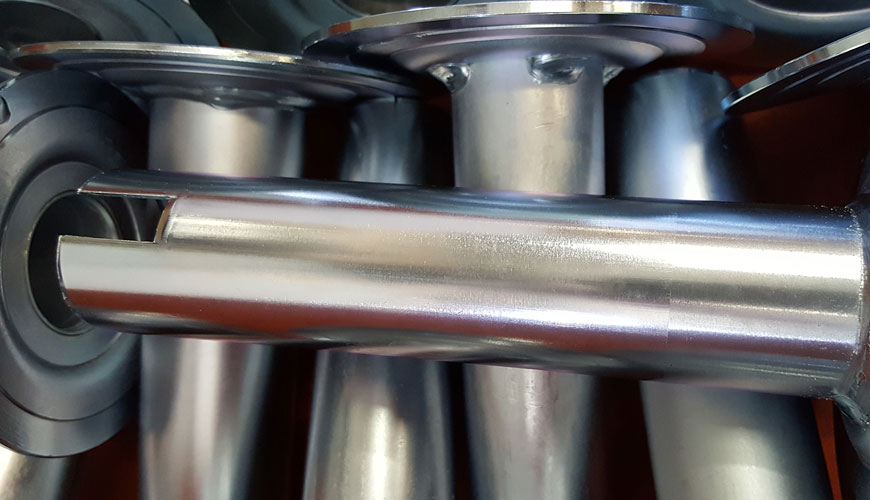

EUROLAB, with its state-of-the-art accredited laboratories and expert team, provides precise and fast testing services within the scope of ISO 2819 testing. ISO 2819 specifies methods for controlling the adhesion of electroplated and chemically coated coatings. It is limited to tests of a qualitative nature.

ISO 2819 does not describe specific tests developed at various times to give a quantitative measure of the adhesion of a metallic coating to a substrate because such tests require special apparatus and considerable skill in their performance, which makes them unsuitable as quality control tests. for production parts. However, some of these quantitative tests can be useful in research and development studies.
If the coated parts are polished in a particular area, the deposit will be prone to work hardening and to absorb frictional heat. If the coating is thin, under these conditions bubble separation of the coating from the base metal will occur in areas of poor adhesion.
When the shape and size of the part allow, an area of not more than 6 cm² of the coated surface should be rubbed with a flat tool for about 15 seconds. A suitable tool is a 6 mm diameter steel rod with a flat hemispherical tip.
The pressure should be sufficient to buff the coating with each stroke, but not so great as to cut the coating. Poor adhesion is indicated by the appearance of a bubble that grows as friction continues. If the mechanical properties of the coating are poor, the bubble may crack and the coating may peel off from the base metal. This test will be limited to relatively fine deposits.
There are some variations of the principle where the hammering action of iron or steel balls, either allowed to fall by gravity or forced by a stream of compressed air onto the surface to be tested, causes deformation of the sediment. If the coating is poorly bonded, it will swell. Generally, the forging density required to cause blistering of non-adhesive coatings varies with coating thickness, with thin coatings requiring less than thick coatings.
EUROLAB assists manufacturers with ISO 2819 test compliance. Our test experts, with their professional working mission and principles, provide you, our manufacturers and suppliers, the best service and controlled testing process in our laboratories. Thanks to these services, businesses receive more effective, high-performance and quality testing services and provide safe, fast and uninterrupted service to their customers.
To get an appointment, to get more detailed information or to request an evaluation, you can ask us to fill in our form and reach you.